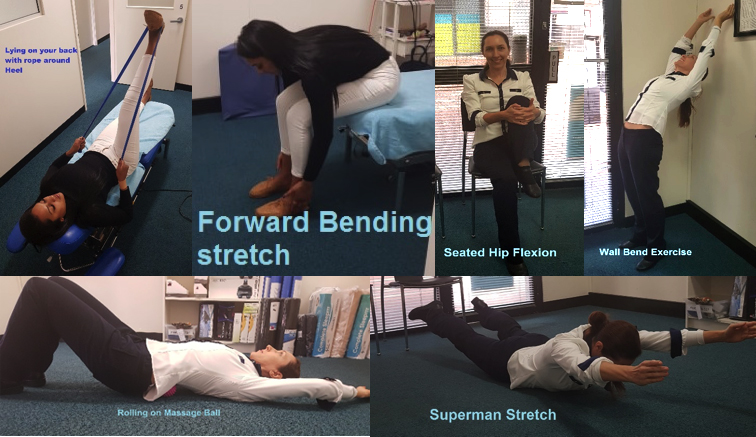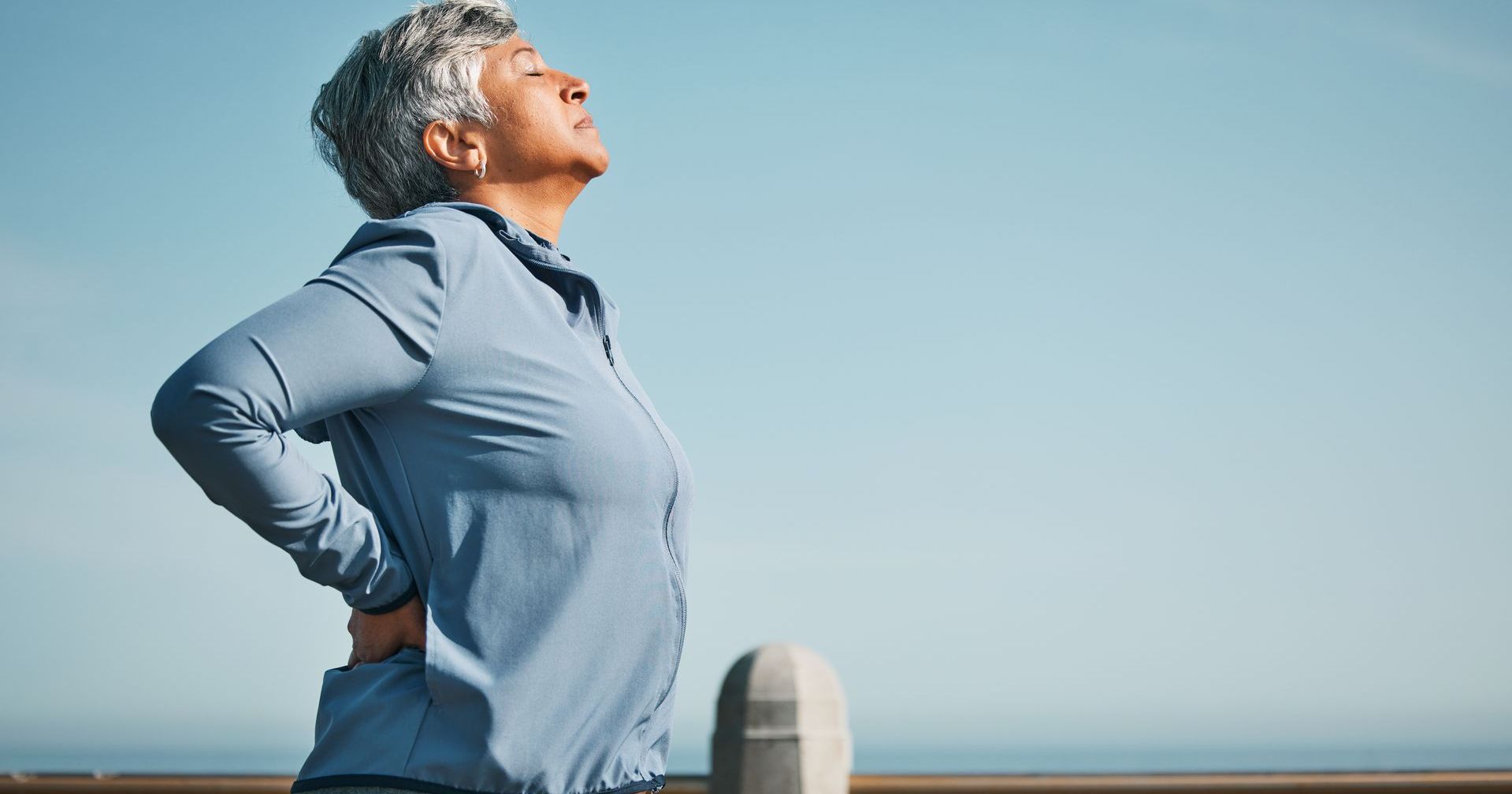Flat back syndrome is characterized by a lack of natural curves commonly found in all spines. As a result of this, the appearance of the spine is much flatter than normal.
Common characteristics of flat back syndrome include:
- The head is protruded forward
- The shoulders are slouched forward
- Thoracic spine and lumbar spine lacks the natural curve seen in most people
- Pelvis rotates posteriorly (backwards)
Flat back syndrome occurs when the lumbar spine is locked in extension/backwards and is generally caused by any condition that shortens the front portion of the spine, causing the patient to lean forward. Muscles contributing to this condition consist of the spinalis thoracis, iliocostalis thoracis, longissimus thoracis and the posterior intercostals. Not having the natural curve in your back affects your body’s ability to equally distribute the load causing lower back pain to occur. Symptoms generally worsen as the day progresses and the patient feels as if they lean further and further forward, the longer they stand upright. The imbalance that flat back syndrome causes has a negative effect on patients, as they feel as if their muscles are fatigued and are in pain.
Exercises to aid flat back syndrome:
- Forward bending stretch- Ensuring you’re sitting on a flat surface, slowly reach down to grab your toes and bend from your waist. Make sure you’re not bouncing while touching your toes and bend down as far as possible. Hold the position for 20 seconds and repeat 3x.
- Lying on your back with a rope wrapped around your heel, extend one leg out to 90o and pull down on the rope. This will assist the stretch in your back and hamstrings. Exhale and hold for 2 seconds and repeat 5x. Once finished repeat on the other leg.
- In a plank position with your elbows aligned below your shoulders and arms parallel to your body, raise your hips and knees and hold for 10 seconds. Slowly release the tension by dropping down and repeat and progressively increase the amount of time planking until you reach 2 minutes.
- Back arching- Lay on top of a medicine ball on your back and arch it over your lower back over a distance of one foot. Repeat for about 5x moving backwards and forwards.
- Wall bend exercise- Stand about a foot away from the wall with your back towards it and stretch your arms overhead and bend backwards until you touch the wall. Move further and further away from the wall when symptoms improve.
- Seated hip flexion- Seated in a chair, raise one knee up towards your chest and hold it for a few seconds and lower it back down. Repeat on the alterative leg once completed and keep repeating the stretch a few times.
- Rolling on a massage ball over the lumbar region- Rolling on a massage ball adjacent to both sides of the spine will help free up the contracted and tender areas of the spine. Spend about 10 minutes to complete the whole thoracic region
- Flexion stretch with medicine ball- Bear hug a medicine ball, aiming at getting your finger tips to touch and flex your spine from the neck down. Repeat 20x.
- Superman stretch- lying on your stomach and on a hard surface, lift both feet and hands off the ground and hold for 10 seconds. Repeat 10 x to increase the stretch.

Chiropractic Management of flat back syndrome:
Many patients with lumbar flat back syndrome can be treated without surgery and generally involve exercises to stretch and relieve tension upon the muscles that have shortened and become overactive. Physical therapy and chiropractic spinal manipulation may also be beneficial depending on the severity of the patient’s symptoms and medications in the form of NSAIDS, can also be administered to help reduce the patient’s pain.
Flat Back Syndrome is an abnormal condition that doesn’t affect many patients and can be defined as a reduction in the natural curve of the spine. Lumbar flat back syndrome is a rare condition and can be treated by seeking a chiropractor, who can derive exercises and a management plan including spinal manipulation, to return the curve back to normal. Improving the curve helps reduce the pain by distributing the load evenly throughout the various segments involved.
Lakeside Chiropractic, can help you in returning your natural curve back to normal and aid in reducing that back pain that has been bothering you for some time. Lakeside Chiropractic is located in Joondalup (North of Perth CBD) and has visitors from many northern suburbs including Leederville, Yanchep, Yokine, Woodvale, Tapping, Ocean reef, Quinn’s Rock and Darch. With HICAPS facilities on site to assist in the expense of your treatment. We are a part of the BUPA Members first network and also Medibank preferred providers; however, we do accept many others including, HIF, HBF, NIB, etc. To book an appointment you can contact us on 93000095 and speak with our receptionist or book via our website www.lakesidechiro.com.au. We look forward to hearing from you soon and treating your condition.



